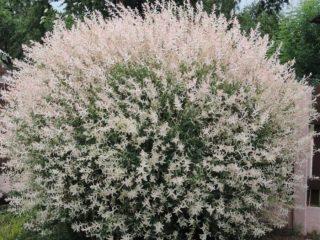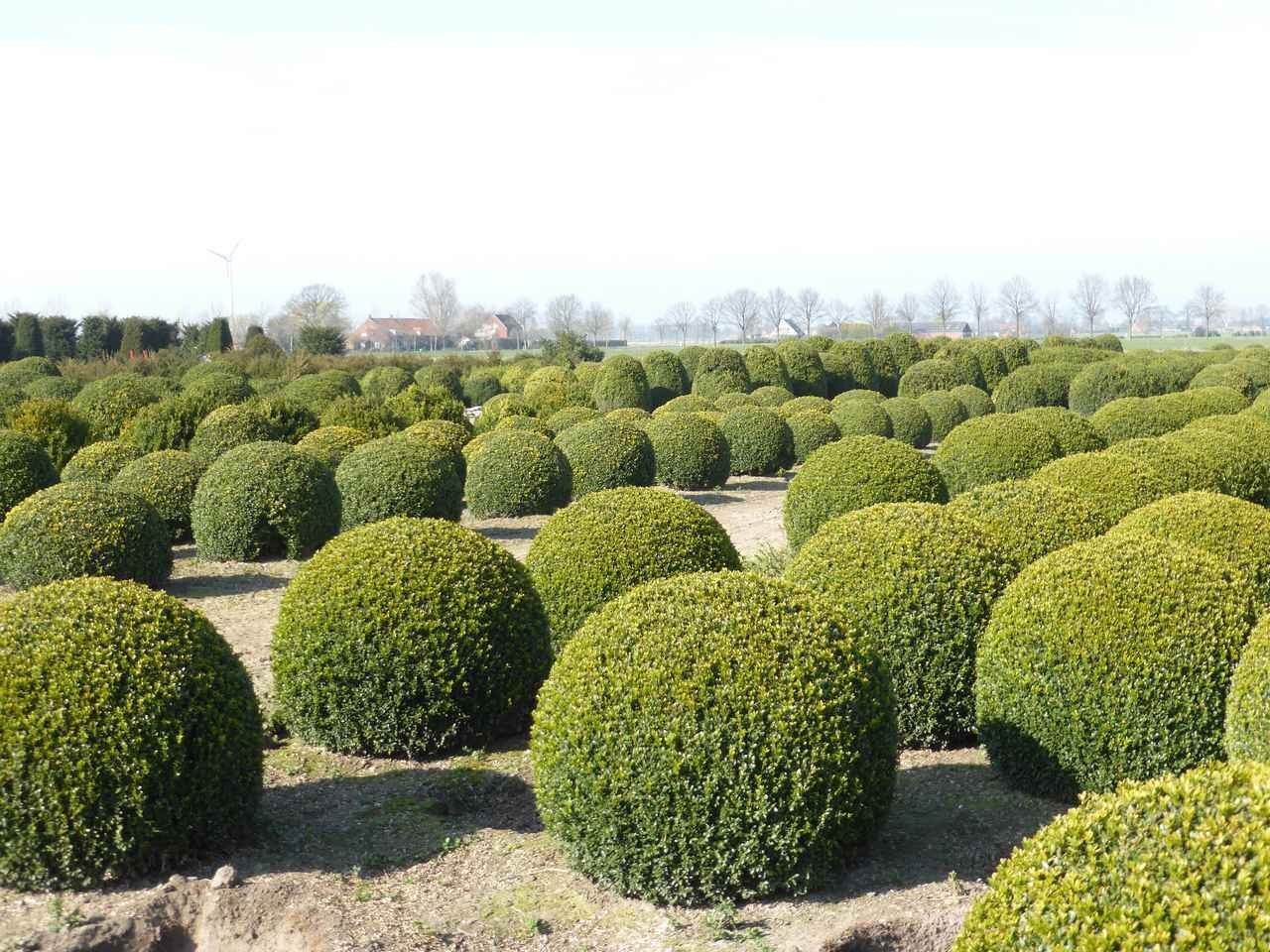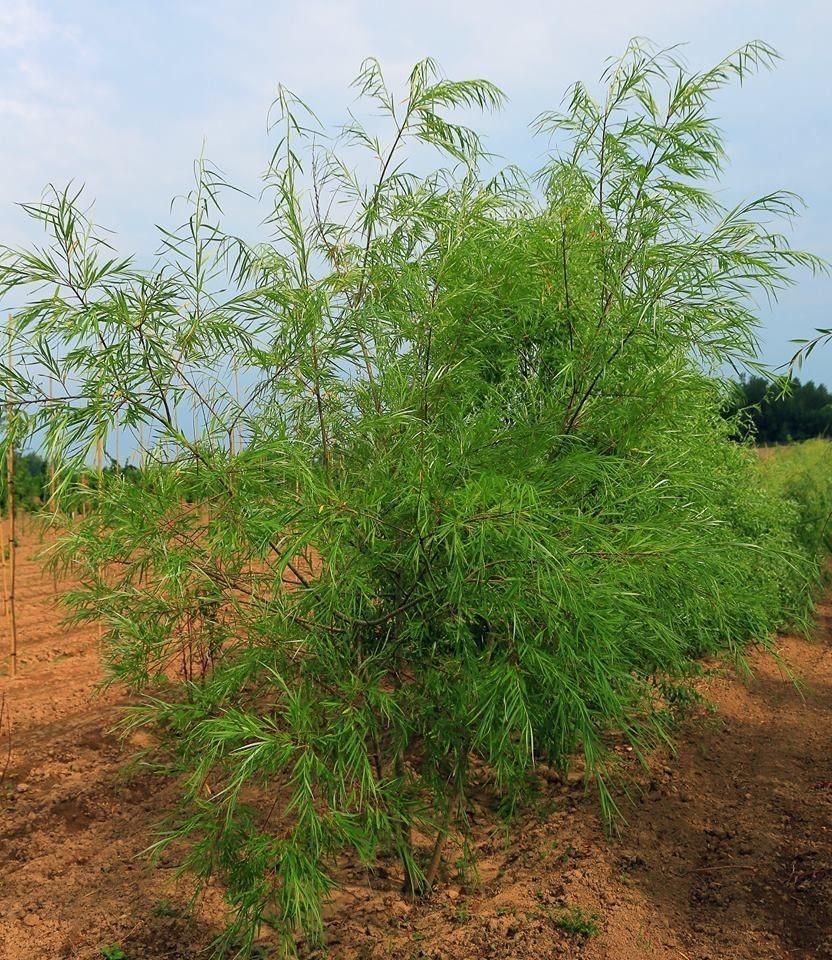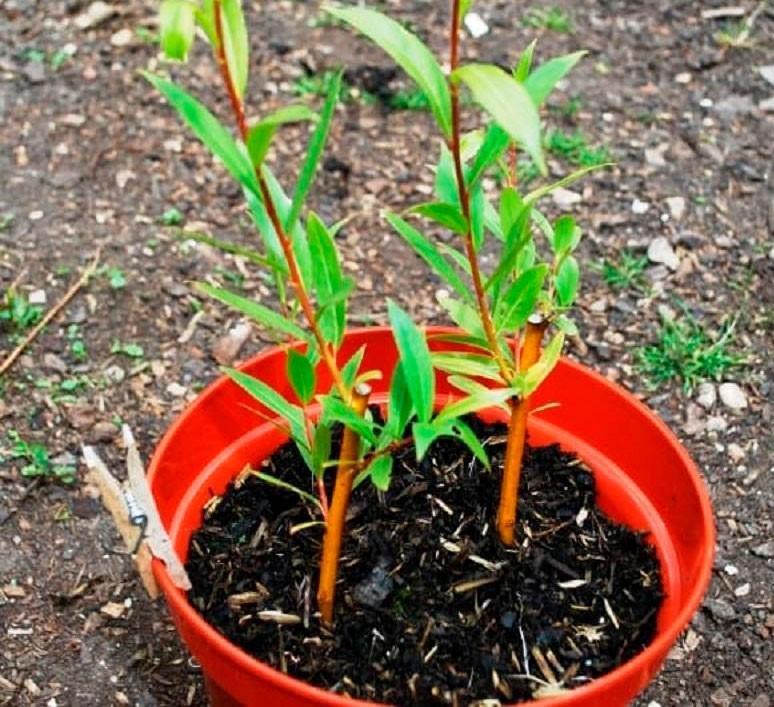Content
Dwarf spherical willow (Salix fragilis Sharovidny Karlik) - a unique dwarf tree that has found wide application in landscape design. The culture is valued not only for its high decorative value, but also for its increased frost resistance. Willow was bred artificially and is a hybrid, so it does not occur naturally. Its cultivation does not require special conditions, but still some rules of agricultural technology must be followed in order for the decorative effect of the dwarf to be maximized.

Willow Globular dwarf is characterized by a slow growth rate
History of appearance
The famous Russian breeder Veniamin Ivanovich Shaburov worked on the creation of the hybrid. The goal was to obtain a compact willow look that could become an original decorative element and would not require complex maintenance. Also, when breeding the Globular Dwarf, the author tried to maintain the high frost resistance of the crop, which would make it possible to grow it in regions with difficult climatic conditions.
And as a result of many years of selection, we managed to obtain a willow seedling whose characteristics fully met our expectations. But exactly what types of culture were used by the author when creating it is unknown.
Description and characteristics of willow Globular dwarf
This is a deciduous tree, the height of which barely reaches 3-4 m. The crown of this hybrid willow is spherical, almost regular, round in shape. The diameter of its growth reaches 3 m. The dwarf can have one or three trunks, which are covered like skeletal branches with red-brown thickened bark; deep winding cracks are clearly visible on it.
The crown of the ornamental willow consists of numerous shoots. Biennial branches are yellowish-brown, partially pubescent, and annual branches are short, thin, reddish-brown, with small internodes. Along the periphery, the spherical crown of the willow consists of thin drooping shoots, so when the crop grows it looks weeping.
The leaves of the dwarf are small, lanceolate. Willow plates reach a length of 5-6 cm, and their width is only 0.6-1 cm. They are green on top and silvery on the back side due to a denser short edge. With the arrival of autumn, the color of the leaves of the globular willow becomes olive and yellowish-red highlights appear. The plates of the dwarf have a pointed tip, glandular-serrate along the edge.

The leaves, which are located at the top of the spherical crown of the willow, have a purple tint
Flowering is sparse. This period for the globular willow begins in May before the vegetative buds bloom. Male and mixed earrings appear on the dwarf. Willow blooms at the age of seven to eight years.
The root system of the spherical decorative dwarf is located in the upper layers of the soil and grows in width. Its depth does not exceed 60 cm.
Advantages and disadvantages
This decorative spherical willow has many advantages, for which it has become widespread among professionals and amateur gardeners. However, the dwarf also has certain disadvantages that are worth paying attention to.
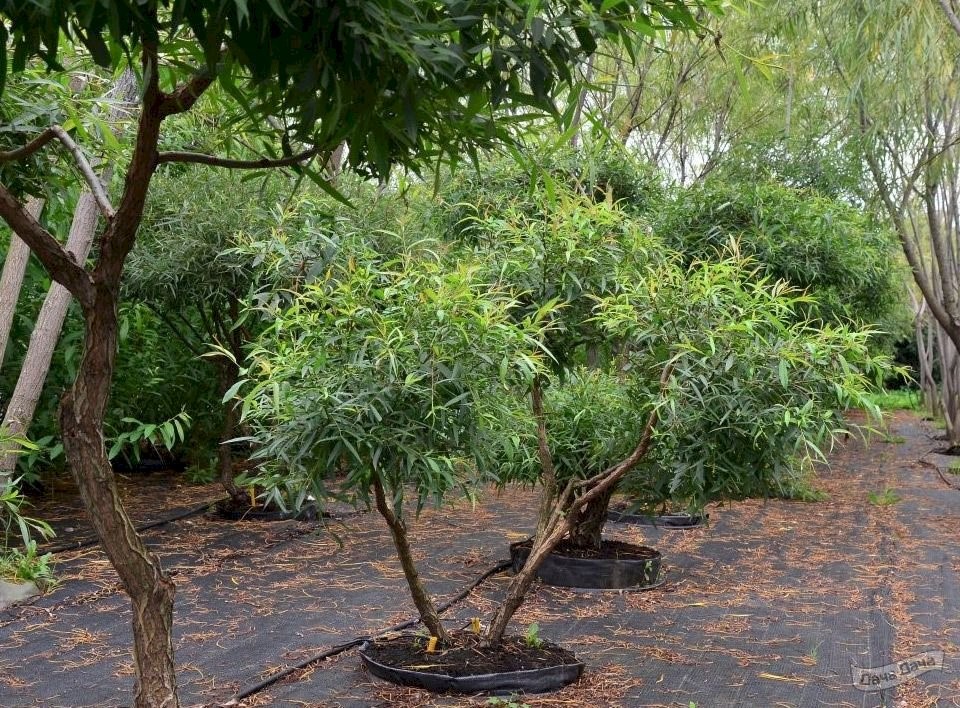
Hybrid willow does not bloom every year
Main advantages:
- compact size;
- thick lush crown;
- tolerates pruning well;
- frost resistance up to -45 °C;
- undemanding to soil composition;
- reproduces well;
- quickly recovers after pruning;
- suitable for small areas;
- goes well with other garden and park crops.
Flaws:
- does not tolerate prolonged drought;
- slow growth.
Planting willow Globular dwarf
For planting hybrid willow Globular dwarf, it is recommended to choose sunny, open areas. At the same time, the culture responds well to high soil moisture, and therefore is able to survive even in places where other plants usually die.
The globular willow can be planted in a permanent place from May to October, subject to favorable weather conditions. To do this, you need to prepare a hole 50 cm wide and deep and fill it with nutritious soil mixture. It should consist of turf, humus, peat and sand in a ratio of 2:1:1:1. It is recommended to plant the dwarf according to the standard scheme. At the end, the willow must be watered generously.

Dwarf willow lives about 75 years
Willow care Globular dwarf
The tree belongs to the category of crops that do not require special attention from the gardener. Therefore, it is enough to follow some simple rules of care to make the willow look impressive.
It is recommended to water the Globular Dwarf regularly in the absence of seasonal rains. Irrigation is carried out at the rate of 20-50 liters per plant, pouring water at the base of the seedling. In this case, after each moistening, it is necessary to slightly loosen the soil in the willow root circle in order to maintain air access to the roots.
It is recommended to feed the dwarf twice a season. It is necessary to fertilize globular willow for the first time in the spring at the beginning of the growing season. During this period, you can use nitroammophoska at the rate of 30-80 g. The dwarf needs a second feeding in August. At this time, you can use 40-80 g of superphosphate and 30-60 g of potassium sulfide. It is recommended to scatter fertilizer granules in the root circle of spherical willow and then incorporate them into the soil.
The appearance of black spots on the leaves is a sign of copper deficiency. In this case, the dwarf globular willow needs a copper chelate spray to correct the deficiency. The procedure is carried out 1-3 times per season.
This dwarf willow requires periodic pruning. It is recommended to radically trim the spherical crown in the spring. During the procedure, you need to remove all damaged and old branches, which will speed up the formation of new ones. Also, during the summer it is necessary to shorten young shoots that stand out from the general mass. This will give the spherical willow a neat, well-groomed appearance.
In late autumn, it is recommended to remove all fallen willow leaves.Young seedlings of the Globular Dwarf need insulation for the winter. To do this, you need to lay mulch 5-7 cm thick in the root circle, and wrap the willow crown with agrofibre several times and fix it so that it does not blow away with the wind.
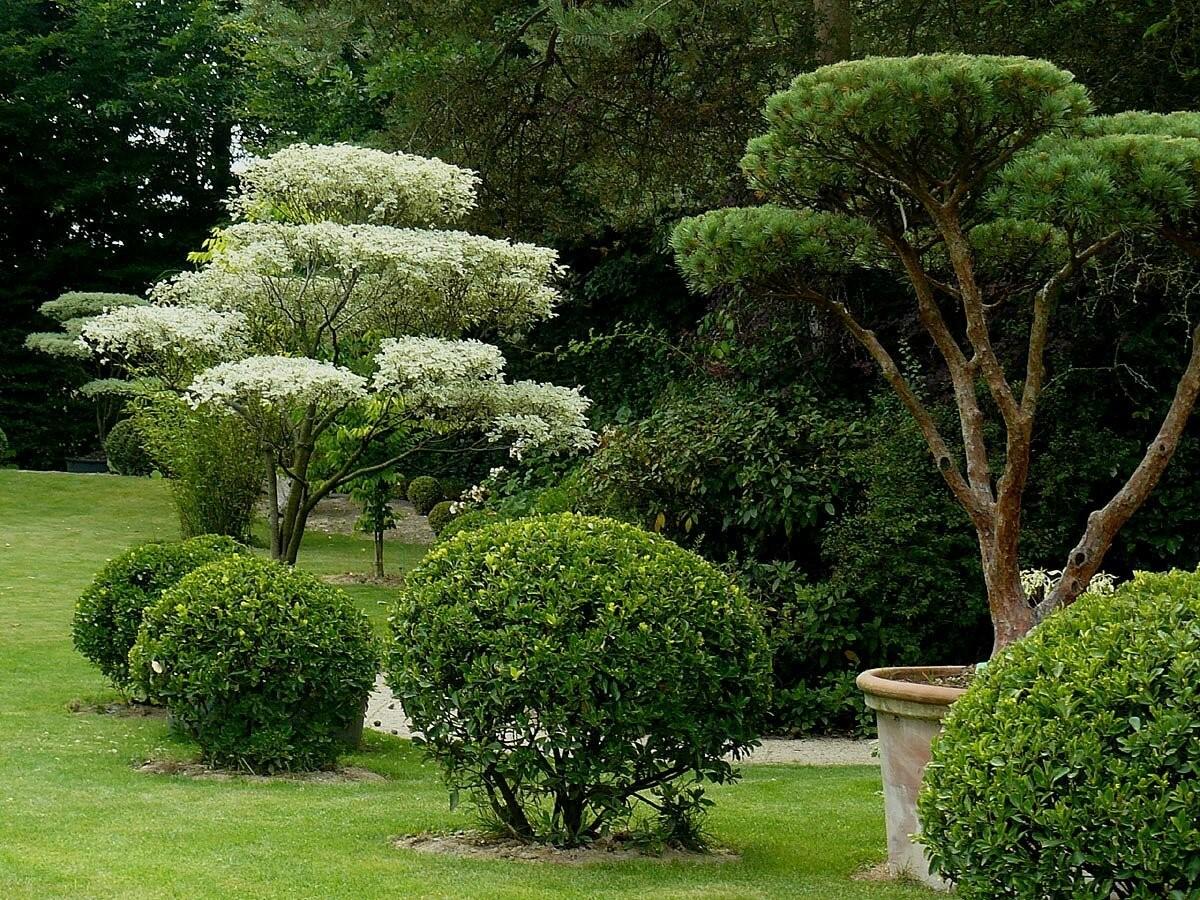
Ball willow gains frost resistance as it matures
Reproduction
The dwarf propagates well by cuttings throughout the warm period of the year. To do this, you need to use one-year-old willow shoots, which need to be divided into parts 35-40 cm long.
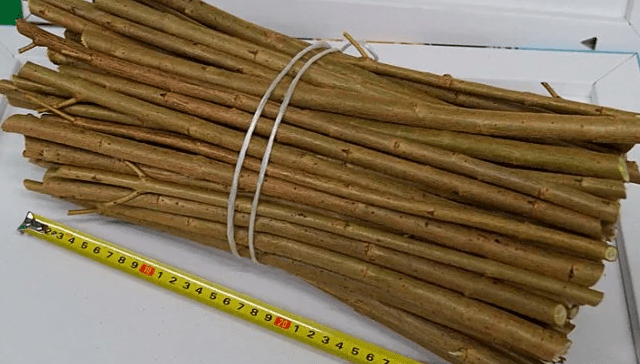
It is recommended to make the lower cut of the cuttings oblique to increase the rooting area
Dwarf shoots should be planted in a soil mixture consisting of turf, sand and peat in a ratio of 2:1:1. After planting, the globular willow cuttings must be watered with Kornevin’s solution and a mini-greenhouse must be built over them. It needs to be ventilated daily. You should also control the soil moisture, preventing it from drying out. If all conditions are met, cuttings of the Globular Dwarf willow will take root after 1-2 months. After this, they can be planted in a row for growing at a distance of 20-30 cm from each other. When the young seedlings get stronger, they need to be moved to a permanent place.
Diseases and pests
This hybrid willow has strong natural immunity. However, unfavorable weather conditions can reduce the Globular Dwarf's resistance to diseases and pests. Therefore, if alarming signs appear, it is recommended to treat the wood.
The globular willow can be affected by white, black and brown spots, scab, rust, cytosporiosis, and powdery mildew. To treat dwarfs, it is recommended to use Bordeaux mixture. Harm to willow can be caused by spider mites, leaf beetles, aphids, weevils, leafhoppers, and spider mites.To combat them, it is recommended to use Bi-58, Actellik, Iskra.
Application in landscape design
Low-growing globular willow is ideal for both gardens and parks. The dwarf looks impressive against the background of a green lawn, and also does not get lost in group plantings. Thuja, juniper, and ornamental shrubs with bright, unusual foliage are perfect companions for the globular willow.

Often a dwarf is used to create a Japanese garden.
The ideal option for a hybrid is to place it near a pond. In this case, the willow will not experience a lack of moisture even during prolonged drought, which will allow it to maintain high decorative properties.
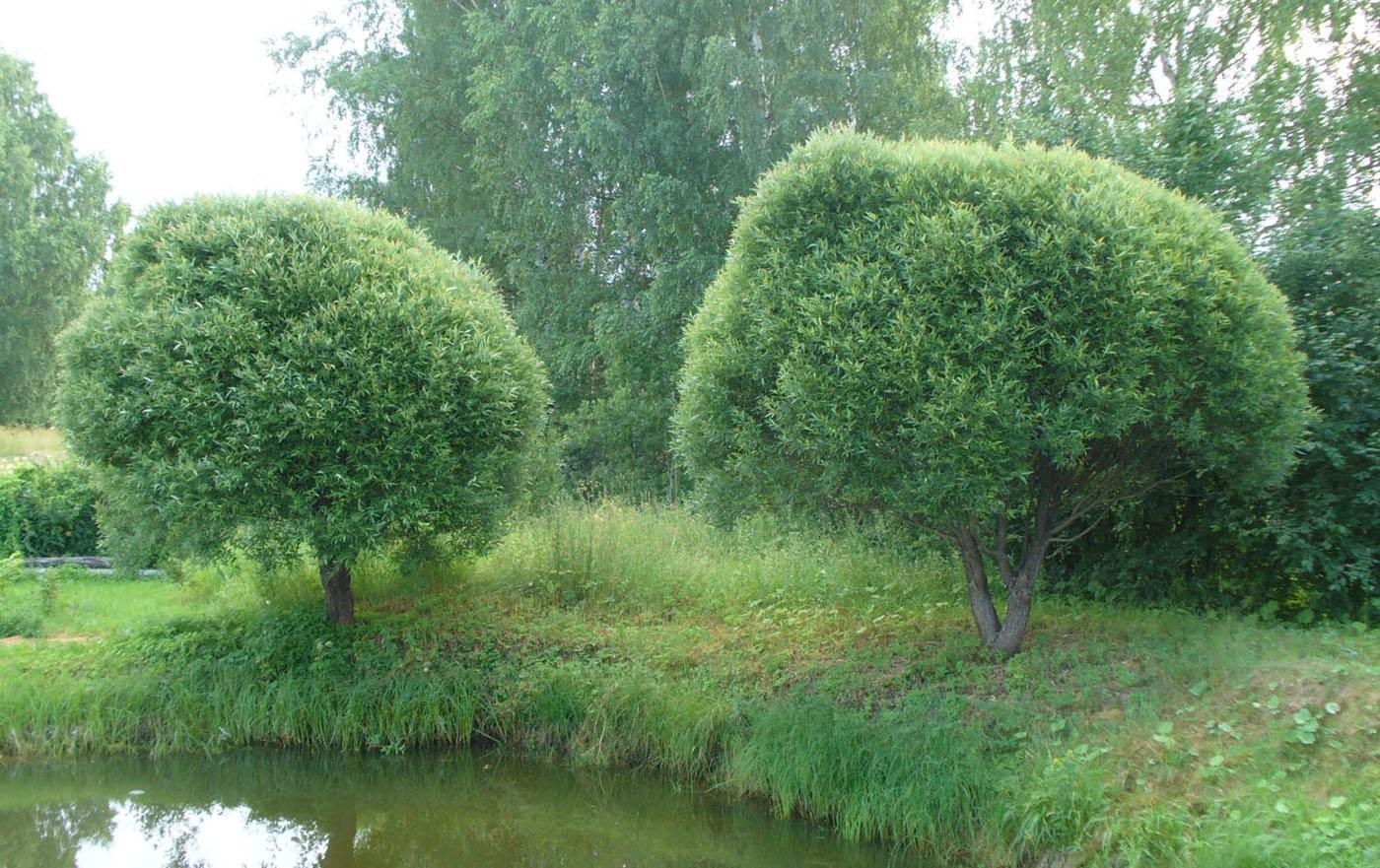
Willow Globular dwarf tolerates polluted air well
Conclusion
Willow Globular dwarf is a tree unique in its characteristics, since it combines all the necessary qualities of an ornamental crop. The hybrid not only has an attractive appearance, but also does not require special attention, since it is able to fully develop and grow a dense crown even in the absence of special care. The main conditions for this are good lighting and sufficient moisture in the soil.
Reviews of white willow Globular dwarf
